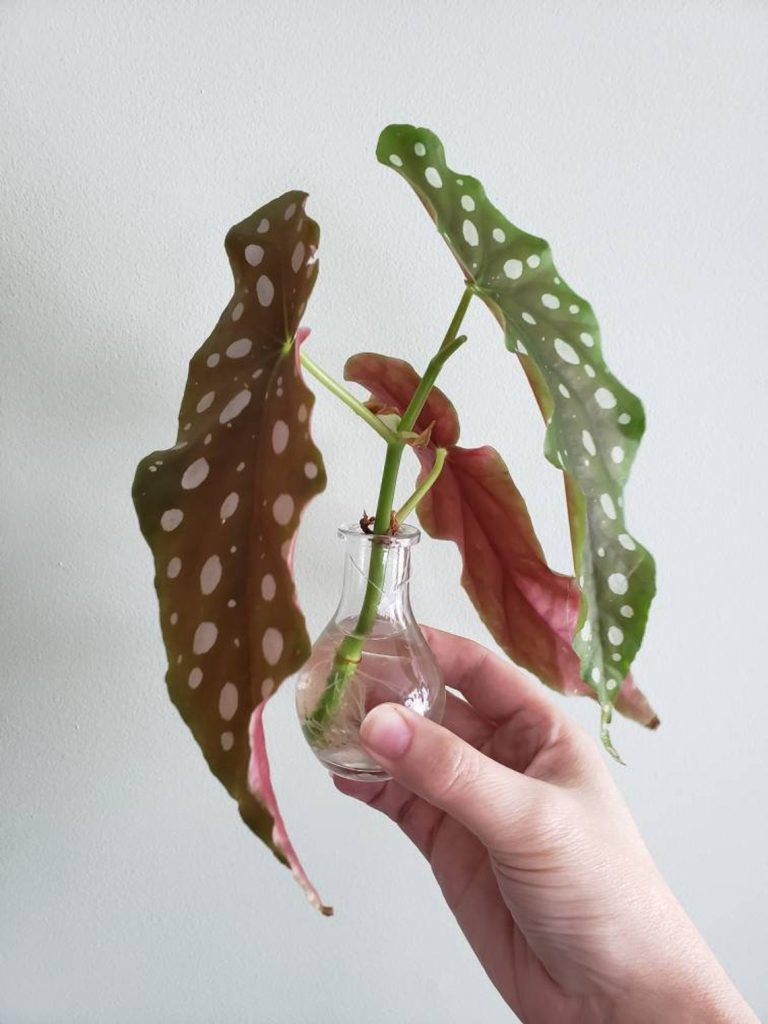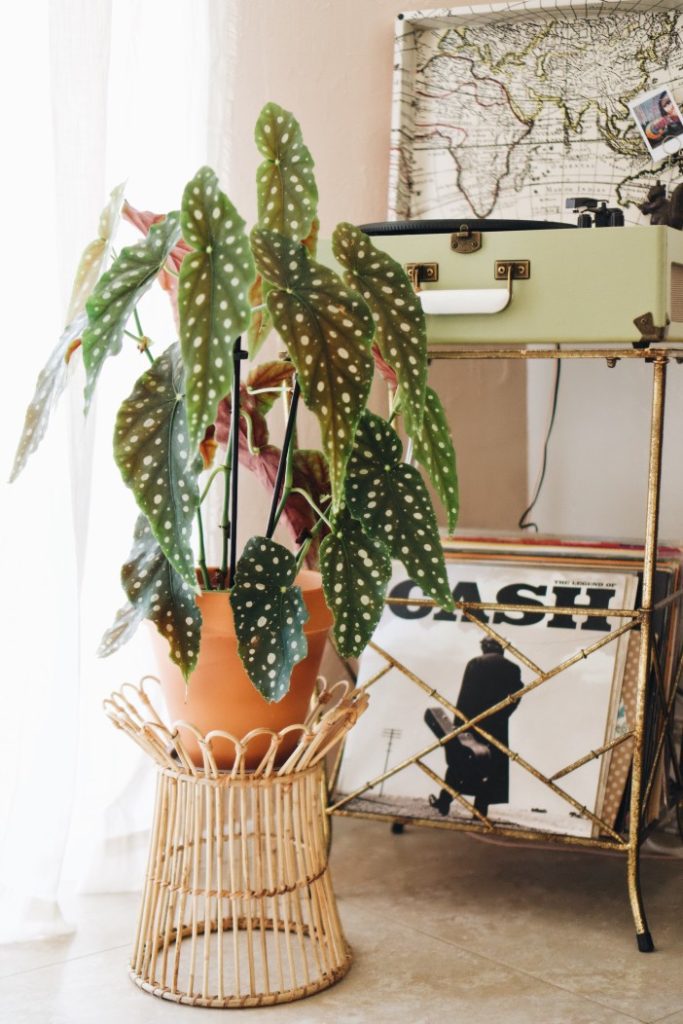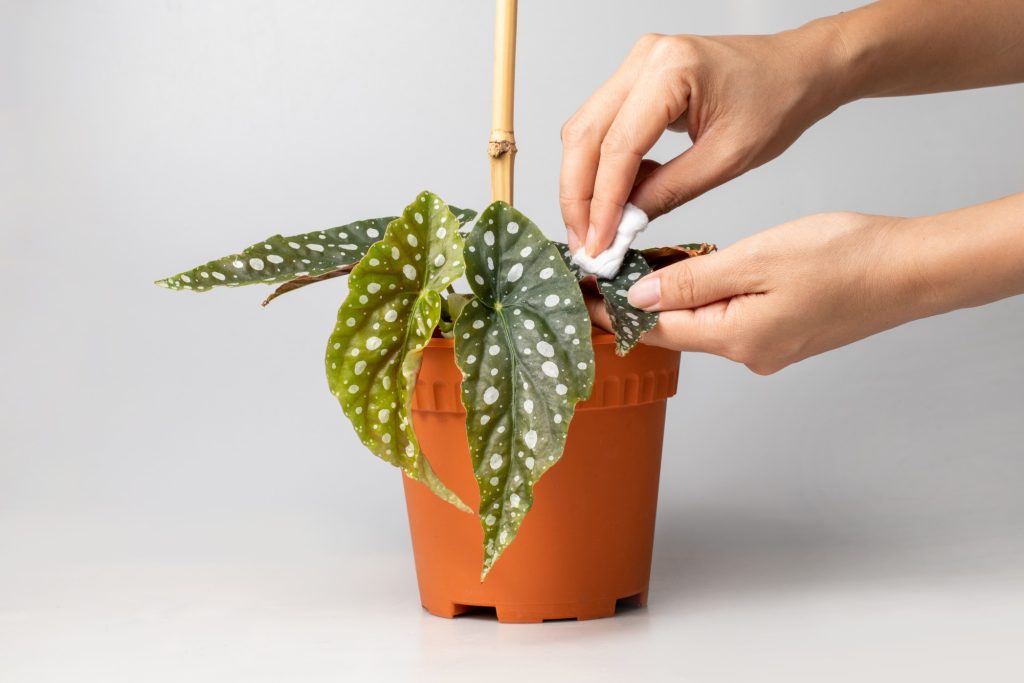Many house plants have been termed to have spots for their foliage appearance but none comes close to the polka dot Begonia. It exudes that polka-like feature in every sense; it is no wonder it has the nickname, the spotted Begonia. The conspicuous dots that appear on this plant makes it difficult to ignore.
The Polka Dot Begonia has a foliage appearance of green with dots of white; these dots appear in different sizes on the plant. The shape of the Polka Dot Begonia which is oblong also looks like an irregular wing. This oblong-shaped plant has wavy edges. All of these features are enough to enhance your home and environment.
This houseplant is very easy to propagate as it just requires certain basic requirements. As an easy and low maintenance plant, it does require much time and attention so tending to this houseplant would not take a toll on your schedule.
This article is a complete care and propagation guide for your Polk Dot Begonia. Everything as regards their propagation, basic requirements, care tips, and questions centered on their growth would be answered as you keep reading. This article makes polka dot Begonia propagation and an easy and interesting task to look forward to.
About The Polka Dot Begonia Plant
| Common Name | Spotted Begonia, Trout Begonia, Clown Begonia, Angelwing Begonia |
| Botanical Name | Begonia Maculata |
| Light | Bright indirect light |
| Plant type | Tropical nature |
| Soil type | Organic soil |
| Soil ph. | Well-drained |
| Water | Moderate |
| Temperature | 65°F – 86°F |
| Native | Southeast Brazil |
| Toxicity | Toxic. |
The Polka Dot Begonia which belongs to the Begoniaceae family can grow up to 5ft in height. The large leaves that this plant exudes help trap dust and toxins, hence, the plant can act as an air purifier.
These house plants are very attractive when grown inappropriate and beautiful pots and containers. The undersides of the polka dot Begonia are as beautiful as the surface although the velvet color makes it contrast with the bright green that appears on the surface.
Some polka dot begonias come with a combination of green and yellow.
Polka Dot Begonia Plant Propagation Methods
The Polka Dot Begonia is very easy to propagate so far you are familiar with the different propagation methods and you follow the steps judiciously. Although they are easy to propagate, this stage requires utmost attention from you.
This is when your polka dot Begonia needs you most.
Polka Dot Begonia Plant Growth Via Water propagation

Water propagation is a very easy but delicate method because any step missed during the propagation method can severe every chance of survival for the Polka Dot Begonia plant.
All you need for the propagation is clean, sterilized scissors or garden shears and clean water.
- Use clean scissors to nip off the polka dot Begonia just below the bud. Ensure the part cut is disease and infestation-free.
- The cutting should be placed in an appropriate jar that allows for a moderate amount of water and oxygen. The leaf should not be submerged in the jar; this is dangerous to its growth. Only the stem should be placed in water
- The container should be placed where it can receive adequate lighting. Remember, not to place the jar in a dark room; placing it in a dark room would lower every chance of survival.
- Change the water of the plant about 2 – 3 times weekly
- Monitor the plant for root growth. After several weeks, root growth would have fully developed.
- Move the developed plant to a pot with an organic mix
Ensure that no harmful substance comes in contact with the jar as the plant is very delicate at this stage. In addition, dab the spot where you cut the mother plant with cinnamon, this helps prevent diseases and infections.
Polka Dot Begonia Plant Propagation Via Potting Mix
The potting mix is quite similar to the water propagation method. The major difference between the potting and the water propagation is rather than placing the stem of the polka dot begonia into a jar of water, the stem would be placed into a small container of organic soil.
You are just replacing the jar of water with a pot filled with moist soil. These are tips that would help with this propagation method.
- The pot or container selected must be appropriate for the stem.
- Ensure that the stem is properly placed in the soil and the soil is made to hold the stem securely.
- Ensure that the soil never dries out and must always remain soggy.
- Remember to place the pot in an area where it can receive adequate lighting. It must not be placed where it can receive bright direct sunlight. This does more harm than good to the plant.
Polka Dot Begonia Plant Care
Once your Polka dot begonia has developed matured roots, it can now be treated as a normal plant. to care for a polka dot begonia, the basic requirements are all you need for the plant to bloom and produce beautifully dotted leaves.
All you need for your polka dot begonia care is just proper lighting, adequate watering, good potting, proper humidity level, and organic soil.
1. Proper Lighting
Your polka dot begonia would thrive in an area where it can receive bright indirect sunlight. keeping them in poorly lit areas reduces the growth rate of the plant. Ensure that plant placement is between leaves that can properly shade it from bright direct sunlight as the heat from the sunlight may burn their leaves. For polka dot begonia grown indoors, ensure it is placed in a well-lit area.

2. Watering
Watering must be moderate for the Polka Dot Begonia. The soil must never dry out and it must never get soggy. Check the soil surface before watering to determine the soil dryness, this helps you know how much water your plant needs.
Also, check the moisture level after watering to determine if the soil is soggy. When soggy, stay off watering till the soil is almost dry.
3. Soil
Your polka dot begonia would thrive in well-drained organic soil. Ensure that the soil allows for good aeration and is void of fertilization.
4. Humidity
The polka dot begonia thrives in low humid environments. They require at least a 45% humidity level to grow. To improve humidity levels, you could grow the plants amidst other plants and make use of humidifiers. Severe weather conditions affect their growth; make provisions that would ensure their survival during winter and summer.
5. Potting
In choosing pots and containers, select well-drilled ones that allow for good drainage. This helps prevent waterlogged soil and reduces the effect of overwatering on the soil. Also, avoid aluminum pots as they contain elements that can corrode the soil.
Polka Dot Begonia FAQs
Why is my polka dot begonia leggy?
If you notice your polka dot begonia plant is looking leggy, that is your plant telling it lacks sufficient light. Inadequate lighting affects the growth of the polka dot begonia. The leaves are usually fewer than healthy plants. Change the location to an area where it can receive bright indirect light.
How much light does my Polka Dot Begonia need?
This plant requires bright but indirect light. Receiving 4 – 5 hours of bright indirect sunlight is sufficient for your polka dot begonia.
Should I mist my Polka Dot Begonia?
Yes, you should mist your polka dot begonia. Misting wades off pests, and humidity levels of your plant and keeps the foliage appearance clean and attractive.
Is Polka Dot Begonia toxic?
Yes, the polka dot begonia is toxic both to humans and pets. If ingested, they could irritate both humans and pets. Upon ingestion, see a doctor immediately and for your pets, have them see a veterinary doctor.
Why are the leaves of my Polka Dot Begonia wilting?
Polka dot begonia wilts when the soil becomes too dry. The dryness of soil is attributed to watering. Frequently water the soil to ensure it never dries but never allow it to get soggy.
Why are the leaves of my Polka Dot Begonia turning yellow?
When the leaves of the polka dot begonia begin to turn yellow, it might be a sign that the plant is being overwatered. The soil of your plant must never get soggy and should remain moist. Reduce watering till the soil and roots recover.
Why does my polka dot begonia have powdery mildew?
Mildew appearing on polka dot begonia is usually caused by overwatering and poor humidity. Reduce watering till the plant improves and use humidifiers to enhance humidity levels. Fungicides help treat powdery mildew.
Final Notes
The polka dot begonia is an attractive plant for your home and environment but when certain measures are not taken and the plant is neglected, the grower may be disappointed and frustrated with the plant’s outlook. These tips are needed for the easy propagation of your polka dot begonia.
- Ensure that the pot used for the plant must fit the size of the plant.
- Remember that your polka dot begonia must always be kept warm.
- Keep your polka dot begonia from drafty areas. Placing them in this kind of area weakens the root system.
- Fertilize your polka dot begonia with high phosphorus and water-soluble fertilizer. Reduce fertilizing during winter.
- Use sterilized equipment when pruning; this helps prevent the transmission of diseases
- If grown outdoors, your polka dot begonia must not be placed on surfaces susceptible to heat like concrete and asphalt.
- Remove dead flowers and leaves frequently, this helps keep the plant attractive ad allows for speedy growth.
Your Polka dot Begonia is ready to bloom if you take note of all these.
Read next: How to Fix (Aglaonema) Chinese Evergreen Yellow Plant Problem

